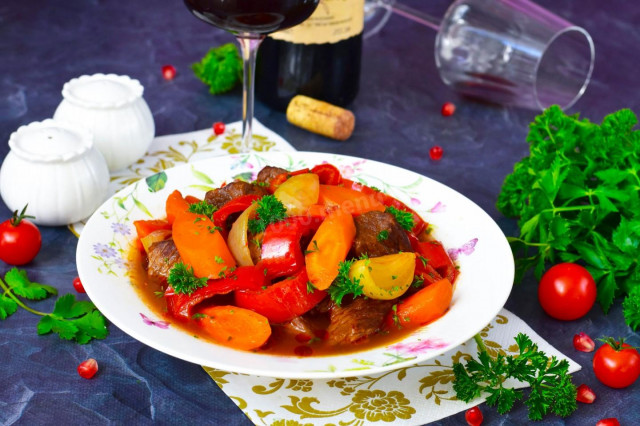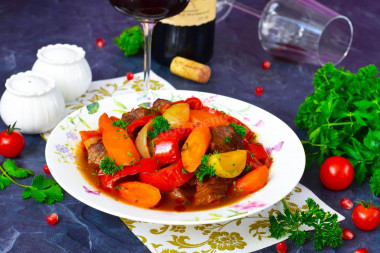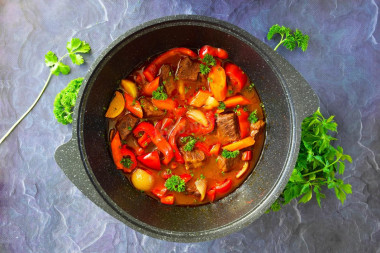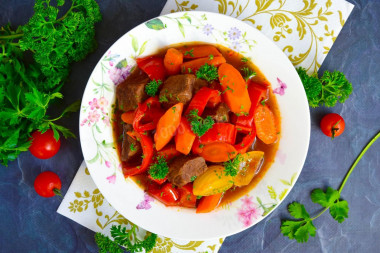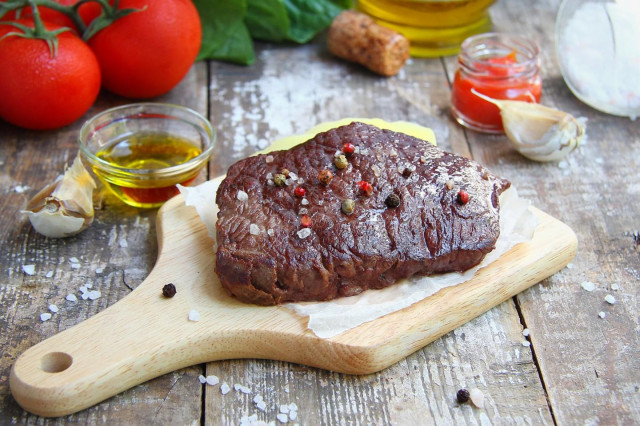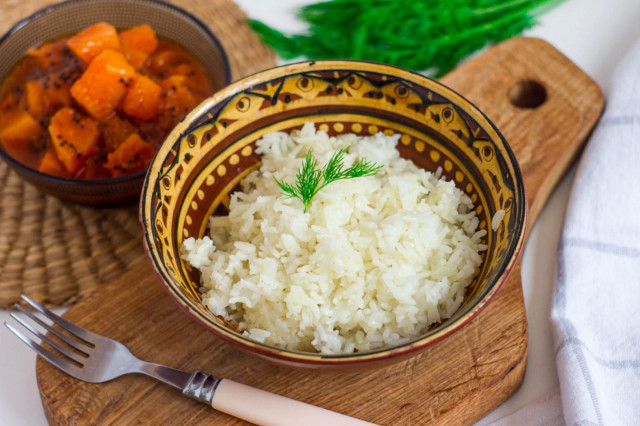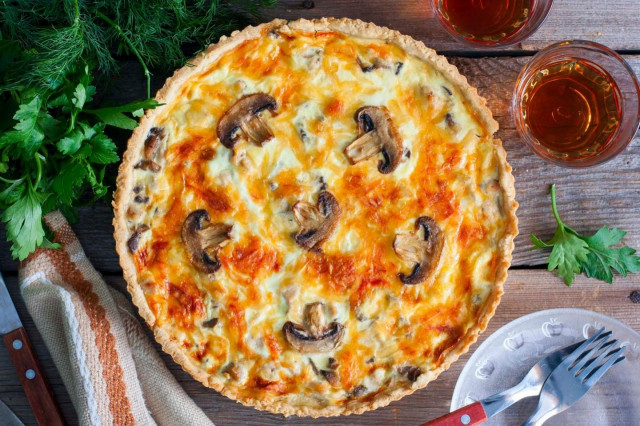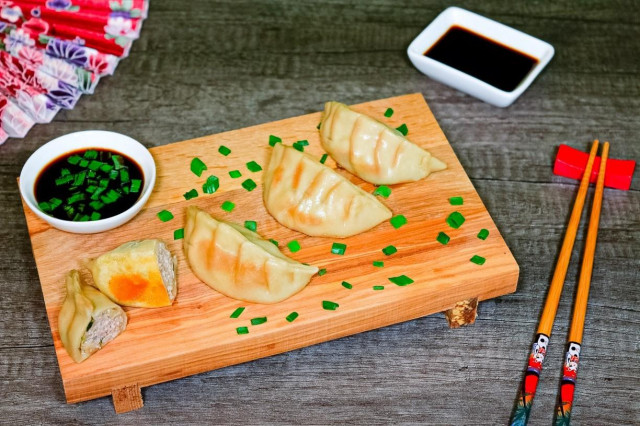Composition / ingredients
Step-by-step cooking
Step 1:
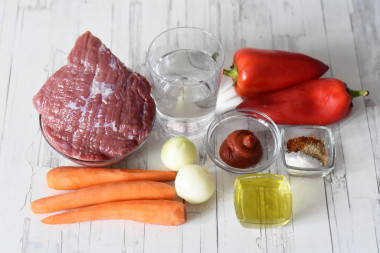
How to make beef with vegetables in a cauldron? Very simple! First, prepare the necessary ingredients according to the list. You can replace beef with veal. You can supplement the vegetable part according to your taste. Tomato paste can be replaced with ketchup or fresh tomatoes, cut into pieces or crushed in a blender. You can replace the water with meat or chicken broth. You can replace some of the water with dry red wine.
Step 2:

Beef is needed without bones and large hard veins, only the flesh. Wash the meat, be sure to dry it with a paper towel, otherwise excessive moisture will not allow it to fry - it will stew. Cut the beef pulp into portions. You can take meat from any part of the carcass. I have a hip part.
Step 3:
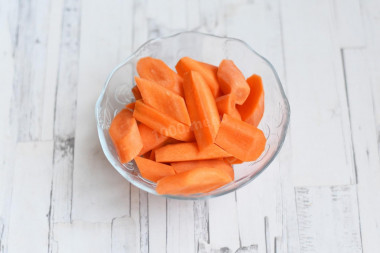
Peel the carrots and cut into medium pieces.
Step 4:
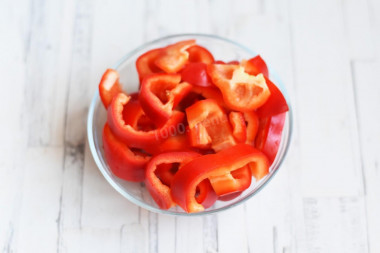
Peel the bell pepper from the seeds and stalks and cut into medium pieces or cubes.
Step 5:
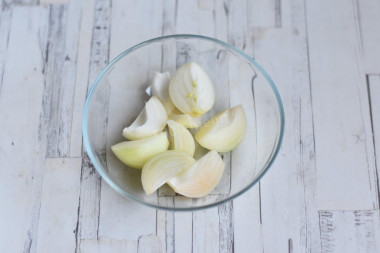
Cut the onion into half rings or quarters, as you like.
Step 6:
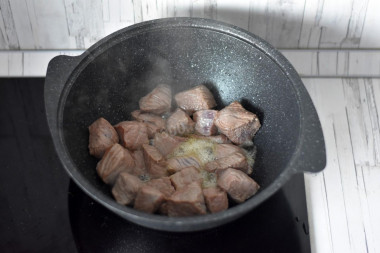
Heat vegetable oil in a cauldron over high heat. Lay out the beef and fry, stirring, for 5-8 minutes until golden brown.
Step 7:
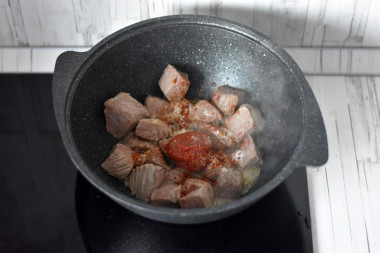
Add tomato paste, salt, pepper, spices for meat, mix well and fry, stirring, for another 1-2 minutes. If you use ready-made spice mixes, be sure to read the composition on the package. Often, salt is already present in such mixtures, take this into account, otherwise you risk over-salting and peppering the dish.
Step 8:
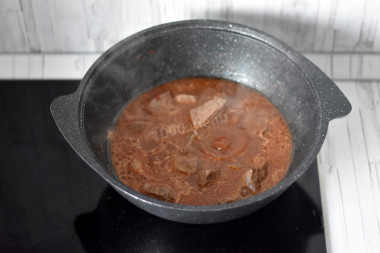
Pour hot water or broth into the cauldron. If you decide to replace part of the liquid with red wine, pour it in with water.
Step 9:
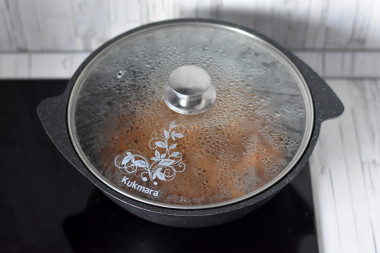
Bring everything to a boil and simmer over low heat (I have a 2-3 of 9 mode) for about 40 minutes or longer under the lid until the beef is soft.
Step 10:
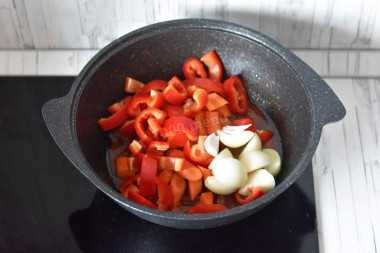
Add the prepared vegetables to the meat, mix. If necessary, pour in some more hot water. Simmer under the lid for another 15-20 minutes or longer until the vegetables are ready. At the end, if necessary, add salt and pepper to your taste. Turn off the heat and let the beef and vegetables brew for 10 minutes under the lid. Bon appetit!
Keep in mind that the quality and taste of the finished dish largely depends on the proper defrosting of the ingredients. How to avoid mistakes and choose the best way, read the article about defrosting.
Since the degree of salinity, sweetness, bitterness, sharpness, acid, burning is individual for everyone, always add spices, spices and seasonings, focusing on your taste! If you put some of the seasonings for the first time, then keep in mind that there are spices that it is especially important not to shift (for example, chili pepper).
Any oils are useful only until a certain temperature is reached - the point of smoking, at which the oil begins to burn and toxic substances, including carcinogens, are formed in it. How to determine the roasting temperature and choose the best oil for frying, and which is better not to use at all, read here .
Caloric content of the products possible in the composition of the dish
- Onion - 41 kcal/100g
- Melted beef fat - 871 kcal/100g
- Fat beef - 171 kcal/100g
- Lean beef - 158 kcal/100g
- Beef brisket - 217 kcal/100g
- Beef - okovalok - 380 kcal/100g
- Beef - lean roast - 200 kcal/100g
- Beef shoulder - 137 kcal/100g
- Beef - ribs - 233 kcal/100g
- Beef - ham - 104 kcal/100g
- Beef - tail - 184 kcal/100g
- Boiled ham - 269 kcal/100g
- Beef corned beef - 216 kcal/100g
- Sweet pepper - 27 kcal/100g
- Carrots - 33 kcal/100g
- Dried carrots - 275 kcal/100g
- Boiled carrots - 25 kcal/100g
- Ground black pepper - 255 kcal/100g
- Vegetable oil - 873 kcal/100g
- Tomato paste - 28 kcal/100g
- Salt - 0 kcal/100g
- Water - 0 kcal/100g
- Spices dry - 240 kcal/100g

